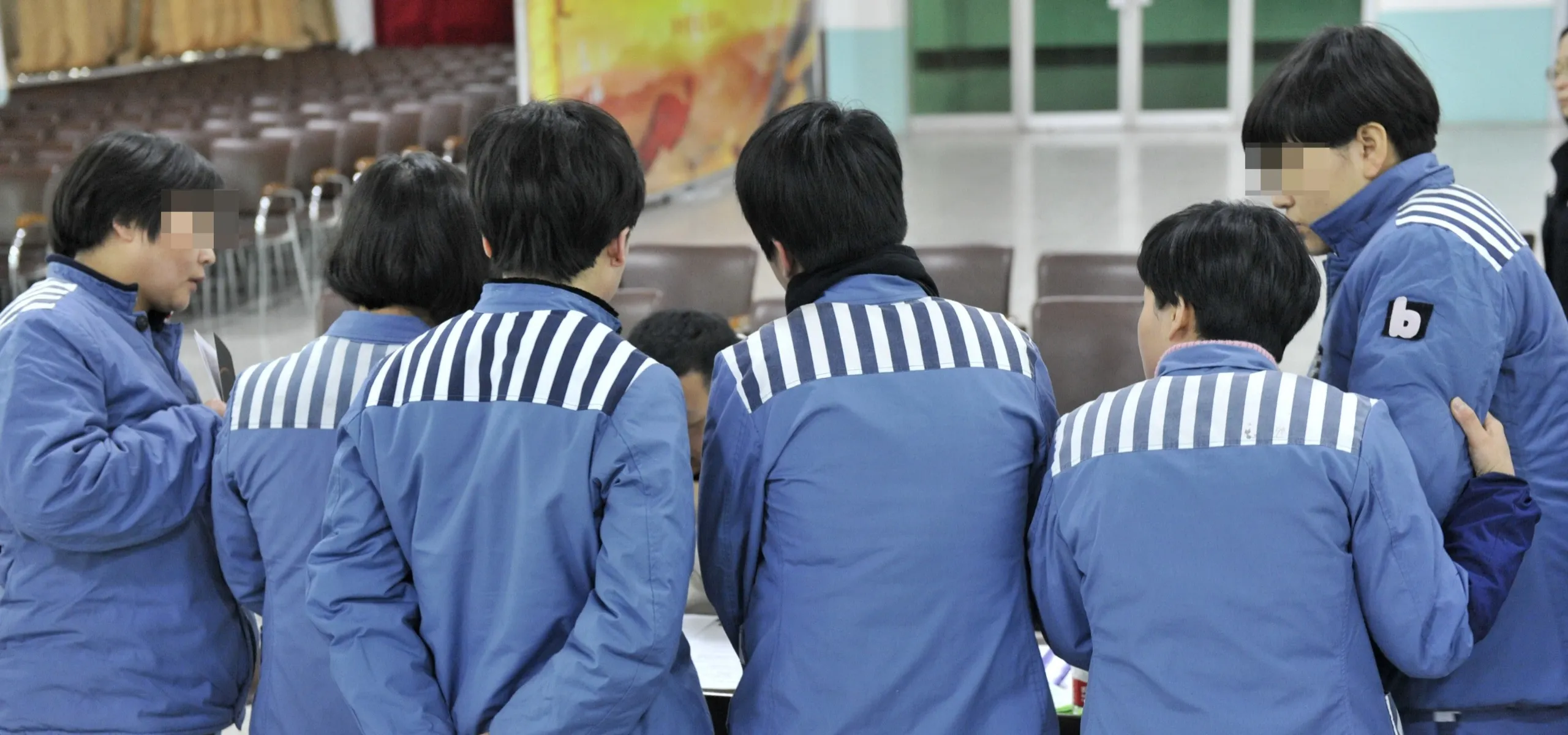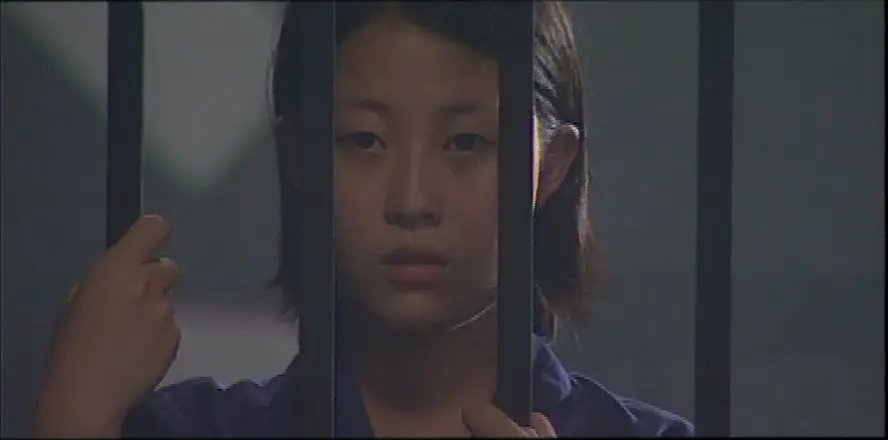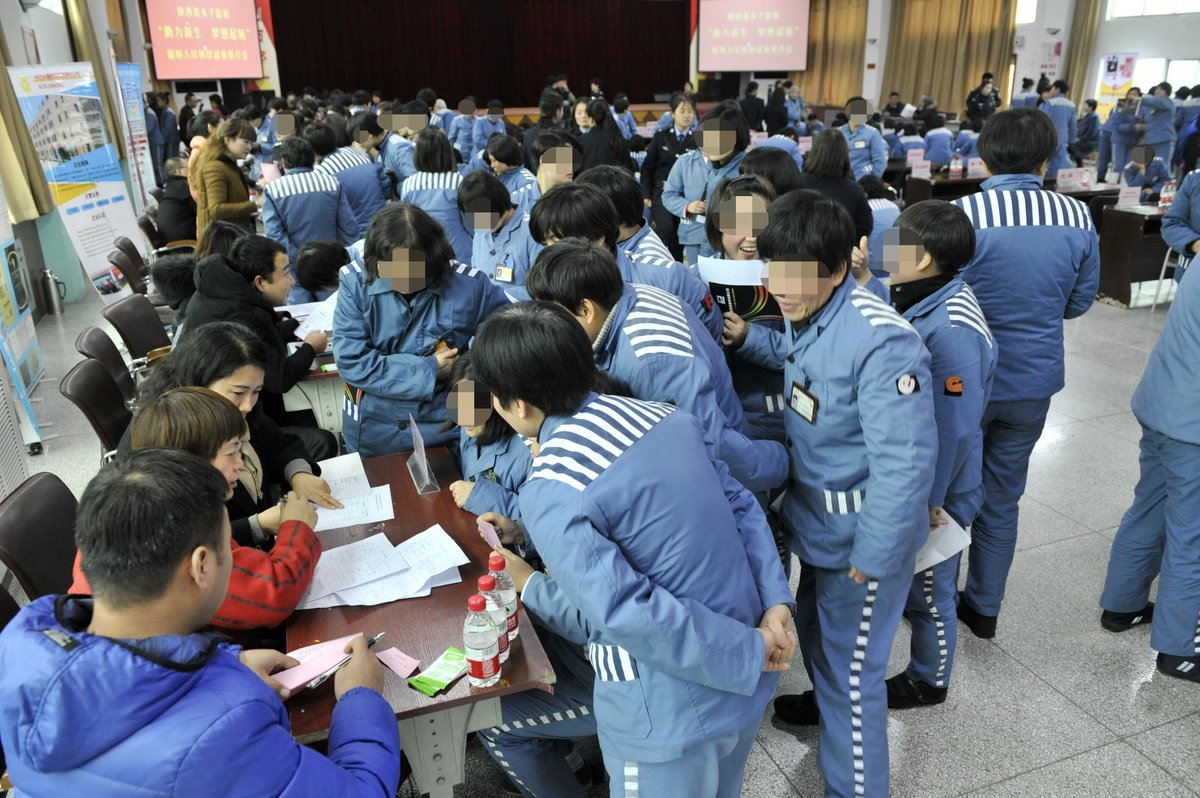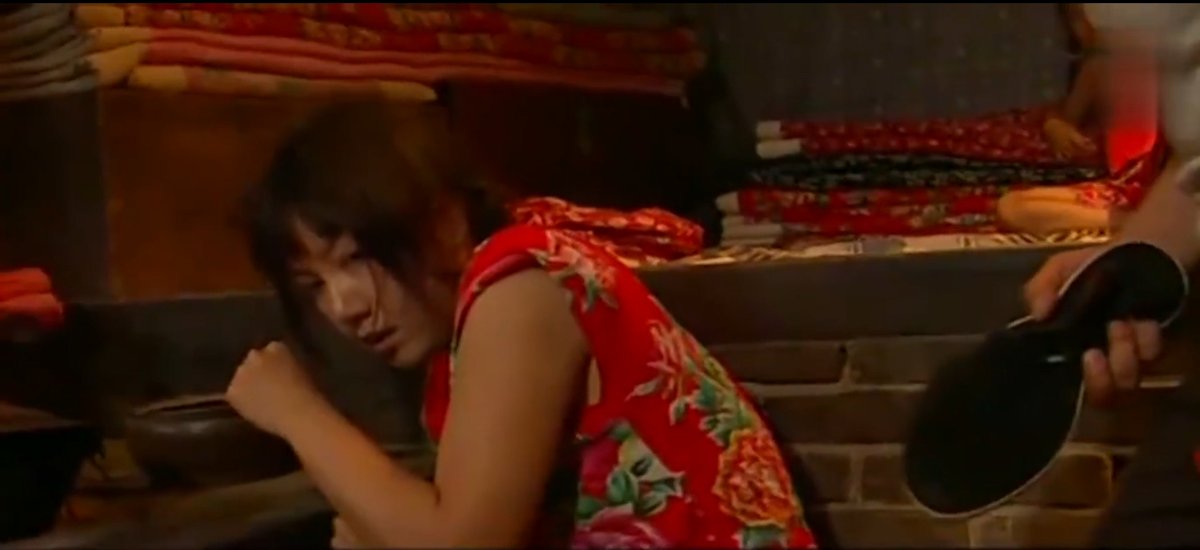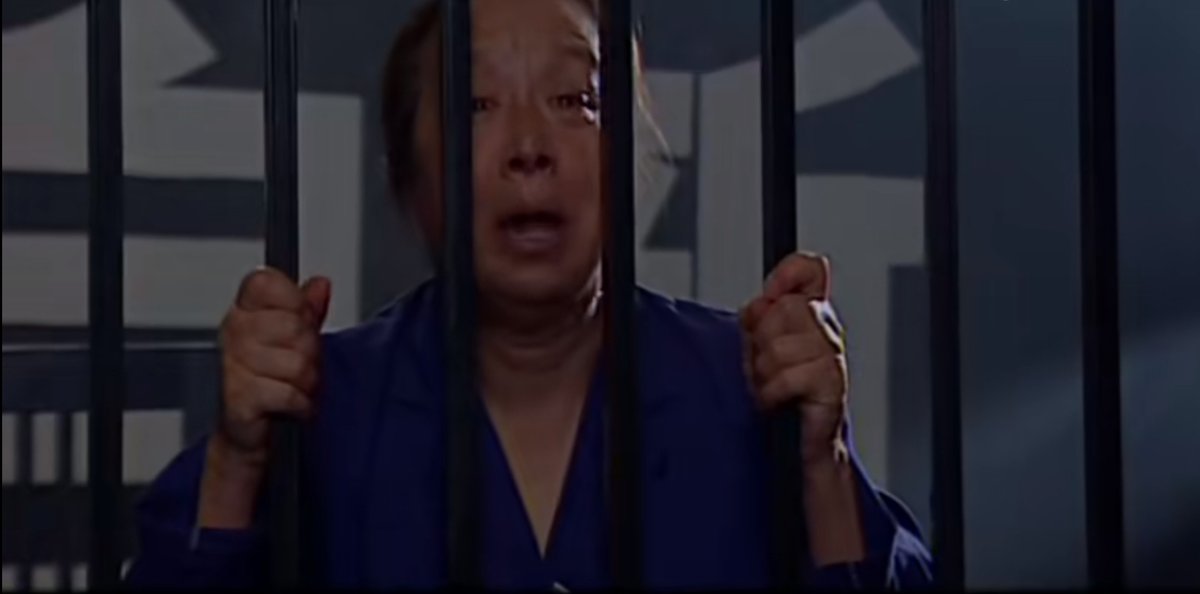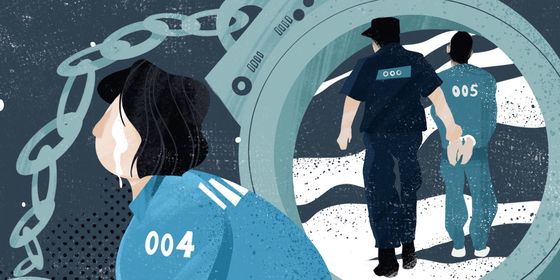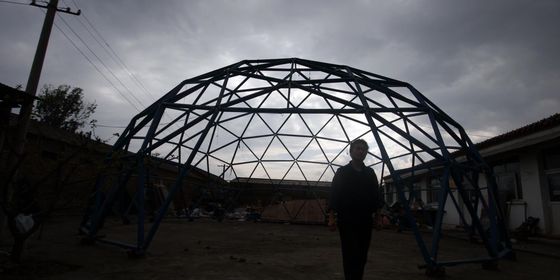A researcher reflects on the social factors driving an increase in crimes committed by women, and what’s being done to help
Story FM’s long-standing column, “Tears Behind Iron Bars,” was started in 2018. Through it, we’ve gotten to know many stories taking place in prisons around the world. While most of the narrators tend to share their own remarkable experiences with the criminal justice system of various countries, today’s guest, Ms. Zhou, is a researcher who specializes in female prisoners. Across more than a decade, she has interviewed many women serving their sentences all across China.
Already during our first interview, she presented quite the shocking fact for us—over the past 10 years, China has seen its number of female prisoners grow at a far higher rate than their male counterparts. The number of crimes committed by Chinese women, or at least the number of prosecutions, is obviously increasing.
In this episode, Ms. Zhou will delve into the reasons behind this phenomenon. She will also share her recollections on traits and circumstances she usually observed among the inmates, as well as the correction methods and strategies that prisons employ on them.
But before jumping into that, Ms. Zhou will share with us the stories of two of these female prisoners—the very ones that inspired her to choose her field of study.
-1-
Starting my research
My surname is Zhou. I was born in the 1970s. I work as a researcher in the field of criminal law enforcement.
In China, every case goes through four levels of the justice system—the Public Security Bureau (PSB), the Supreme People’s Procuratorate, the Supreme People’s Court, and execution of the sentence. When a person commits a crime, the appropriate branch of the PSB will step in first in order to investigate the case and bring it up to the relevant branch of the People’s Procuratorate, which will then issue approval to arrest and prosecute any suspects. The case will then go through a trial, leading to a sentence to be finally carried out, or “executed.”
The PSB, People’s Procuratorate, and People’s Court are all concerned with the alleged criminal offense, and you’ll find most of their inner processes follow a format. However, the final level places the focus on the perpetrators themselves.
As a PhD student, my research was focused on this final step, execution—that is to say, the prison system where inmates serve out their sentences. Later, after I graduated, I began to focus on female crime.
When I first joined my current research team, fresh out of campus without any practical experience, I was immediately shipped to a grassroots unit where I’d learn the ropes for half a year.
However, regulations clearly state that female correctional officers are not allowed to enter those areas designated for male inmates. The way I saw it, there was no point in being there at all if I couldn’t get in contact with the prisoners. I pleaded with my supervisor to apply for a transfer to an all-women prison, and was eventually assigned to Wuhan Women’s Prison for my training. This was a decisive move for my career.
Before I ever walked through the doors of an all-women prison, I fully bought into the usual stereotypes that these female prisoners were some mysterious group. However, as I observed them closely, soon enough I found that there was a lot more common ground between them and us ordinary people than there were differences.
I can empathize to a certain extent with these female inmates—their feelings of confusion and entanglement, the contradictions in their lives, and even some of the deeper constraints they feel and the subsequent emotional impact on them.
-2-
The prisoners who influenced me
I discovered that there are often different triggers for women and men to commit a crime.
For example, I once heard of this case of intentional homicide. The perpetrator was a rural woman. Though there weren’t any family woes at first glance, acute conflicts in the household soon emerged with a deeper look into the case. Husband and wife lived in a small two-story building together with his parents. The marriage was far from blissful, and to top it off, she also argued with her mother-in-law often. These issues were only compounded when she developed postpartum depression.
Well, she ended up throwing her baby off the second floor...
…It’s really hard for me to even speak about this. At the time, the incident had a particularly strong emotional impact on me. Once you become a mother, some things just hit much different than before.
This case was nothing short of a tragedy, and it impacted you on an emotional level.
Yet simultaneously, from a researcher’s perspective, this woman was worlds apart from the criminals of our imagination. Yes, of course—she was a cruel mother. But, her “cruelty” was not without reason.
I don’t think this tragedy was inevitable. If better policies could have prevented such a tragedy, I think we should extend the arm of government to reach these kinds of criminals.
I can also recall yet another case where a woman intentionally committed homicide.
This woman came from a rather patriarchal family. Her mother passed away when she was still very young, and her father treated her horribly and beat her often. Other people also treated her poorly, and every time she was wronged, she would take to the cemetery, where she lay next to her mother’s tomb to talk to her and sleep the night away.
Later, this woman got married and gave birth to a girl, in a region where boys are still very much favored. Around the same time, a neighboring family’s daughter-in-law gave birth to a boy, and this threw her into a turmoil. This went on for a few years, until one day she tricked the neighbors’ little boy to come play at her house, and fed him poisoned snacks.
Again, this kind of crime is more complicated than we can imagine. After many a great emotional shock, I became able to spot the clear differences. I also began to focus on these factors at the starting point of my research, in the hope that I could help bring about some change.
-3-
The role of culture and social environment
I think ethics and gender both play a greater role in female crimes than they do in those crimes committed by men.
In the case of the second woman above, patriarchy was indeed the direct driving force behind her crime. Men are allotted a dominant role in society, so they are unlikely to face struggles due to gender. Women, on the other hand, are subject to discipline by patriarchy, and as a result, their character—and, in turn, their behavior—may be shaped by it.
Nowadays, more and more women are taking a more active role in society. According to data from the World Bank, the participation rate of Chinese women in the workforce in 2020 reached 59.8 percent, and this is actually lower than this figure has been in past decades. There’s another way to read this data, though—modern working women are squeezed dry by both family and career, with comparatively fewer social resources than their male coworkers.
When the resulting conflicts reach their extreme, it can lead to crime.
Public data show that the growth rate of crimes committed by women has far exceeded that of crimes committed by men. Additionally, statistics from 2004 to 2011 showed that the overall number of incarcerated prisoners grew by 7.16 percent in China, while the number of female prisoners grew by 30.53 percent.
Story FM: It’s worth emphasizing that the crime growth rate and crime rate are two separate concepts. The number of females committing crimes is still much smaller than the number of males. In 2011, female prisoners only accounted for 5.62 percent of the total number of inmates in Chinese prisons.
Worldwide, the growth of female crime seems to be linked to social and economic development. Some developed countries have experienced a surge in the growth rate of female offenders in the past. For example, in France, the crime rate for women increased by 155 percent in the 12-year period from 1960 to 1972.
-4-
Women Who Deal with Drugs
With the development of society as a whole, so too have female crimes evolved to present unique characteristics. Most notably, the majority of these women are serving terms in prison for “non-violent” crimes.
A statistical sample in 2012 showed that violent crimes accounted for only 13.04 percent of crimes committed by women, while the same crimes accounted for 32.64 percent of crimes committed by men.
The main types of crime committed by women vary by province, they mainly involve property infringement, pornography, and gambling. Theft, fraud, prostitution, and drug trafficking are also among the most common offenses.
When asked about the most common type of crime she’s seen in her years of research among female prisoners, Ms. Zhou noted that drug-related crimes were at the top of the list.
The impact of drug use on female crime is far greater than that on males. To begin with, there are physiological factors at play—due to estrogen, women may be particularly sensitive to the effect of drugs.
Another is the influence of gender norms.
Many girls start using drugs in middle school in order to socialize. Women are more likely to be submissive and don’t excel at saying no, so things like sugar pills at friends’ parties tend to be their gateway drug of choice.
At the same time, gender-based disparities in wages mean women are often significantly worse off than men financially. This is particularly true for divorced women who have to step up as single mothers—drug trafficking is likely to become their one financial lifeline when they find themselves in dire straits.
I once met one of these single mothers; she’d divorced when her child was very young. She tried to raise the kid on her own, but life soon became challenging when her ex-husband did not send his child support payments on time. Having only a middle school education, this woman stood no chance in the job market. Eventually, friends introduced her to the drugs she herself never used—she was well aware of the risks, and merely trafficked them to survive.
It’s not like drug trafficking isn’t risky. However, many of these women in less-than-favorable circumstances do take the risk because of the high profits and low threshold to enter the trade. This is how gender becomes an element indirectly pushing women into committing drug-related crimes.
Once, I also met an interesting female inmate. At first sight, she had fairly good skin and a smile on her face. Little did I know that she was a drug addict. Later, when I asked her about the reasons for her drug use, I found out that drugs had helped her shed weight. This was her third time in prison.
She confided in me that she used to be overweight, which she thought made it impossible for her to wear nice clothes or find a boyfriend. That was when she heard that using drugs could help her lose weight.
However, weight depends largely on a person’s basal metabolism. This is why every time this inmate quit drugs in prison and ate a balanced diet, she gained all her weight right back.
Eventually, she was released, only for her to turn back to drugs to lose weight again. Then, she’d inevitably enter prison once more…
So, gender is definitely at the root of this vicious cycle. Rarely do we see a man who is so hell-bent on losing weight that he’d resort to drug use.
In addition to drug-related crimes, other common criminal offenses among women vary depending on the time of year, the province, and even from one prison to the next. But most of them fall within the following categories: fraud, theft, and disorderly behavior (“provoking quarrels”).
-5-
An older woman picking a fight
Another common trait among female offenders is that they tend to have low education levels, compounded by little knowledge of the law. Next, we will get to hear from Ms. Zhou about one of these inmates—an elderly woman with no job and precious little education.
Episodes of disorderly behavior have been frequent in recent years, especially due to demolitions taking place all across China for real estate development.
In one instance of a neighborhood demolition, everything seemed to be going smoothly enough, with most residents agreeing to be relocated. But for some reason, one family among these relocated households felt that they were entitled to greater compensation than the rest. So, they appointed this old lady to stir up trouble.
First, this granny blocked the road in front of the gate of the local government office, dragging the staff as they walked by and grabbing their bags. This wouldn’t have been such a big deal, except she then escalated her shenanigans until she ended up rushing into a government office building, defecating on some desk, and smearing garbage everywhere.
This elderly prisoner was far from a unique case. At a certain point, these older women internalize a message from their whole family that they’re only valuable in their role as scapegoats for the rest of them. Whatever the family is trying to get away with, they’re more likely to succeed—and the stakes are much lower—if they appoint an old woman to do it.
In fact, this whole concept seemed to be a common denominator when I interviewed these older prisoners. Like some sort of sad old hen, these matriarchs truly believe that their sacrifice will bring happiness to the rest of the family. However, this twisted thought is tinged with sorrow. It’s hard not to be moved by their plight—even they break under the weight of their tragedy.
It’s not easy for these women to fight against these concepts, rooted in our traditional culture for thousands of years. It’s not going to change by sentencing someone to a few years in prison.
-6-
”Everyone here treats me so well”
Female crimes also tend to be more “emotionally driven.” By this we mean that, although violent crimes only account for a small proportion of crimes committed by women, crimes like intentional homicide and intentional injury by women are more likely to be committed against people whom they have a close relationship with, such as their spouses, lovers, relatives, and close friends.
Statistics show that 85 percent of women imprisoned for intentional injuries are married. Some experts are of the opinion that, compared to adolescent girls, married women tend to be part of more complex social relations and have more complex family issues. Thus, they are more likely to have conflicts with relatives, husbands, neighbors, colleagues, and others.
Ms. Zhou once met a female prisoner who had committed intentional homicide. The story of this woman has remained with her ever since.
Once, I met a woman who was behind bars for murdering her husband. By all accounts, she looked like an ordinary housewife in her 50s, still in fairly good health. She could not be any further from our stereotypical image of a murderer.
This case happened in 2000, when she was living in poverty in a mountainous area that was relatively closed off to the rest of the world. Needless to say, this woman had barely had any education.
In his bachelor days, her husband was a true menace, the poster child for domestic violence. Idle all day and unwilling to do farm work, he also dumped all responsibility to care for his paralyzed mother on his wife. When she worked herself to the bone in the field and raised the chickens, she did so with their child strapped to her back. She didn’t know what her husband did all day when he left the house, but later I heard from the police that he slept around, gambled, and played video games day and night.
Whenever he did go home, he only did two things—ask for money and beat anyone in arm’s reach.
The family was always in dire straits, and that was bad news for her—less money for her husband to pilfer meant a harder beating. But, even with a little extra, he was still always ready to lash out. In her own words, “There just was no escape.” All this violence always took place in front of her daughter.
Once, her husband came home drunk and asked for a particularly large sum of money. He then went to sleep and warned her that he’d beat her when he woke up.
At that moment in the story, she told me, “I was terrified.” She kept repeating those words like a mantra, and as she did, her gaze no longer focused on me and her voice broke as she started shivering. It looked a lot like an episode of post-traumatic stress disorder.
She said it was then that she killed him in his sleep.
Later I asked her, “Didn’t you ever think about getting a divorce?”
She replied, “I did, but I’m not educated enough. Once, when he was out, I took the chance to leave home. I don’t know just how many mountains I climbed until I finally found a place with the five-pointed star like a government office. I walked in and asked for a divorce, but...”
I can well imagine the staff at whatever office she went to lacked the awareness to distinguish domestic violence from an ordinary family dispute. Apparently, they persuaded her against filing for divorce, reminding her of the old saying “It is better to destroy 10 temples than end a single marriage” and encouraging her to make up with her husband. However, she took this to mean that the government simply “did not allow me to divorce.”
So, this woman found herself with nowhere to go. Her worries went far beyond the very real possibility that one day he’d beat her to death—what would happen to her daughter and even her mother-in-law then?
I cried twice during my interview with her. It was also at some point in this interview that it became apparent just how much she missed her daughter.
Another time I asked her, “How are you doing in prison?”
She lit up. Her face was that of a person who’s been pulled up from the bottom of a deep well to see the sun.
“Everyone here treats me so well,” she said. “I get to eat my fill at every meal, my clothes don’t have any patches, and every police officer smiles at me…”
I burst into tears. Here was a woman who thought herself to be in heaven just because people treated her like the human being she was. What kind of hell had she climbed out of, that she actually considered prison to be an improvement? And there was the irony—she had to commit a crime to bail herself out of her nightmarish life.
Later, I also asked her whether she had any plans once she’d finished serving her sentence in just a few years.
She said, “Oh, plenty. I am looking forward to getting out. My daughter got married, and I am already a grandma. I’ll go help her take care of the baby. And, you know that I didn’t even finish elementary school, but I’ve learned so much here in prison. I can read a lot of characters now. I learned to plant tea. When I get out, I’ll rent land on some mountain and grow tea.”
After my time with her, I actually ended up thinking that prison could be great for some people. Left at the bottom of society and forgotten, this woman suffered nothing short of an ordeal, but broke free from her fate via this terrible method. She climbed out of her ordeal to claim back her own humanity and eventually return to a normal life.
As you can see, it made her a different person.
This woman must have served close to 20 years in prison. In the past, even with domestic violence as an extenuating circumstance, she might very well have ended up with a commuted death sentence or life imprisonment.
However, new legislation has been issued in recent years in order to try and ensure that any sentence handed out for a crime like this will factor in the circumstances. Sentences have thus been significantly reduced, or even commuted, for longtime victims of domestic violence that end up murdering their abusive spouses. It’s a step in the right direction, for sure; but I don’t think it’s enough.
-7-
Rehabilitating female offenders
Ms. Zhou’s story shows some of the efforts made by Chinese penitentiaries toward the rehabilitation of female inmates. In the past, most provinces only had one women’s prison. However, the gradual increase in female prisoners has ramped up the construction and management of facilities catering to women. Accordingly, the rehabilitation of female offenders has evolved according to their specific characteristics and needs.
I have colleagues whose research is focused on family support for prisoners. Overall, female inmates tend to get more support from their relatives and loved ones than their male counterparts. They receive more letters, phone calls, and video-calls during their incarceration.
Though both male and female prisoners miss their families, they display their feelings in different ways. Men tend to voice more general concerns. When asked who takes care of the kids, usually they reply, “Either their grandparents or my wife. I don’t know what’s going on now that I’m not around.”
But, female prisoners are different and usually have very specific worries. They’ll say things like, “I’d just got a call from my girl’s math teacher when I left. Her grades for that subject had dropped, but she was doing pretty good with Chinese. Now, I don’t know how she’s doing with her math anymore. Does anyone even care about that?” Or, “My daughter has reached puberty. Last time I called home I heard that she started her period. Who will she turn to if she has questions?”
Every female prison has an art troupe producing very emotional programs, usually centered on family bonds, such as those between parents and children. I cry easily, and it’s even easier for me to put myself in the shoes of the characters, so one prison show is all it took for me to steer clear of all performances in the future.
In these plays, you will often see a female prisoner who is a mother herself playing the same role on the stage, holding a fellow inmate in the role of a child. It’s a very raw, vulnerable moment for them. Police officers persuaded me to pass on these plays—they don’t think the prisoners need to act for these kinds of roles, and it’s just a lot of tears for everyone involved.
In my interviews with female police officers, they also emphasized that every single female prisoner has a “soft spot.” Finding it is key to opening up their hearts. Thus, we’ve been trying to adopt a more personalized approach in the rehabilitation of female offenders—something we call “individualized correction.”
Emotions are really crucial for these women. No matter how uncooperative they may seem, these female inmates can be immediately transformed if they feel that the police officer in charge really cares about them.
Once, I made a point of interviewing a few criminals who had violated many rules in prison. One of them was even fairly aggressive during our interview. However, it was apparent to me that she’d already made some great improvement.
Later, I learned that this prisoner hadn’t had an easy life. She was the youngest of her family, and had outlived all her parents and older siblings. Orphaned and lonely, she was eventually arrested for fraud.
She was clearly upset as she talked about this all, but then her mood changed when she described the discipline process she was going through. Not only had she softened visibly—she asked me whether I’d noticed the effects of the process on her and whether she was on track.
This prisoner confided in me that even though she would forget her own birthday, one year a guard from northeastern China made her a bowl of stewed pork vermicelli with lots of fried beans as a special birthday treat. She cried when she took the first bite—she said it was the best thing she’d tasted since she’d last had a meal cooked by her mother. That moment was a turning point for her.
Correctional methods have been improving at many Chinese female prisons in recent years. Their architectural design will now adopt some local elements and allow inmates to personalize their surroundings. Additionally, these prisons have been incorporating radio stations and therapy services. Some have even placed large acrylic fish tanks in the hall, hoping to cultivate love and a sense of responsibility among female prisoners by having them care for pets.
Ms. Zhou clarified that, in her opinion, gender-specific management of prisoners is far more complex than, say, slapping a pink bow on things. It’s about teaching these female inmates things like cultural knowledge, vocational skills, and even sex education. In a certain female prison in Yunnan, for instance, there was the idea that a deep-rooted concept of male superiority had made the women incarcerated for sex work think that their bodies were worthless; they had no reservations even about being naked in public. Therefore, sex education courses in women’s prisons are vital for these prisoners to understand their bodies, and cherish them as they become aware and proud of their femininity.
-8-
The road to avoiding crime
There is a story—and a series of complex struggles—behind each female prisoner, and preventing them from committing a crime in the first place is preferable to applying correctional methods after the fact. Ms. Zhou has shared with us the key circumstances she believes will allow girls to grow up and stay clear of crime.
First: No matter how difficult it may be, children must finish middle school.
This is a huge dividing line with regard to female crime. If girls manage to finish high school, their risk of entering the walls of prison is reduced even more, and the chances will only grow slimmer the more education they get. Education really is this magical thing with an all-around impact on people. Sometimes, all it takes is one act rooted in ignorance for things to go terribly wrong.
Second: Sex education is a must for children.
Many female offenders are survivors of sexual assault or harassment. Not only do sexual assault and harassment cause the victims to act out in potentially criminal ways—they also come with significant, permanent psychological trauma that will affect a victim throughout their lifetime. Correction and rehabilitation can hardly make up for this harmful effect.
Third: Don’t limit yourself based on gender.
Gender will affect behavioral choices when used as an excuse for self-limitation. If a woman feels her body has no value, she may choose to sell it. A girl who doesn’t think her life is worthwhile is likely to do something desperate for the benefit of the family or someone else. Little girls need to know that their inherent value is the same as that of boys from the very beginning.
Produced by Liu Dou
References:
Chen, Gong. “Tentative Analysis of Female Prisoners’ Characteristics, Motivations, and Preventative Measures. Law and Society, January 2012.
Cheng, Lei, Lü Xiaogang, and Chen Jianjun. “Report on the Situation of Incarcerated Females in China,” 2015.
Lai Xiugui. “Elementary Analysis of Female Prisoners’ Characteristics, Motivations, and Prevention.” Journal of the Central Institute of Political and Legal Management, January 1998.
Yu, Man and Wang Lili. “Brief Discussion of Female Prisoners’ Characteristics and Prevention.” Jsfy.gov.cn, August 2, 2013.
Zhang, Xiaoxiu and Ouyang Hui. “Elementary Analysis of Female Prisoners’ Characteristics and Prevention.” Chinacourt.org, November 28, 2012.





